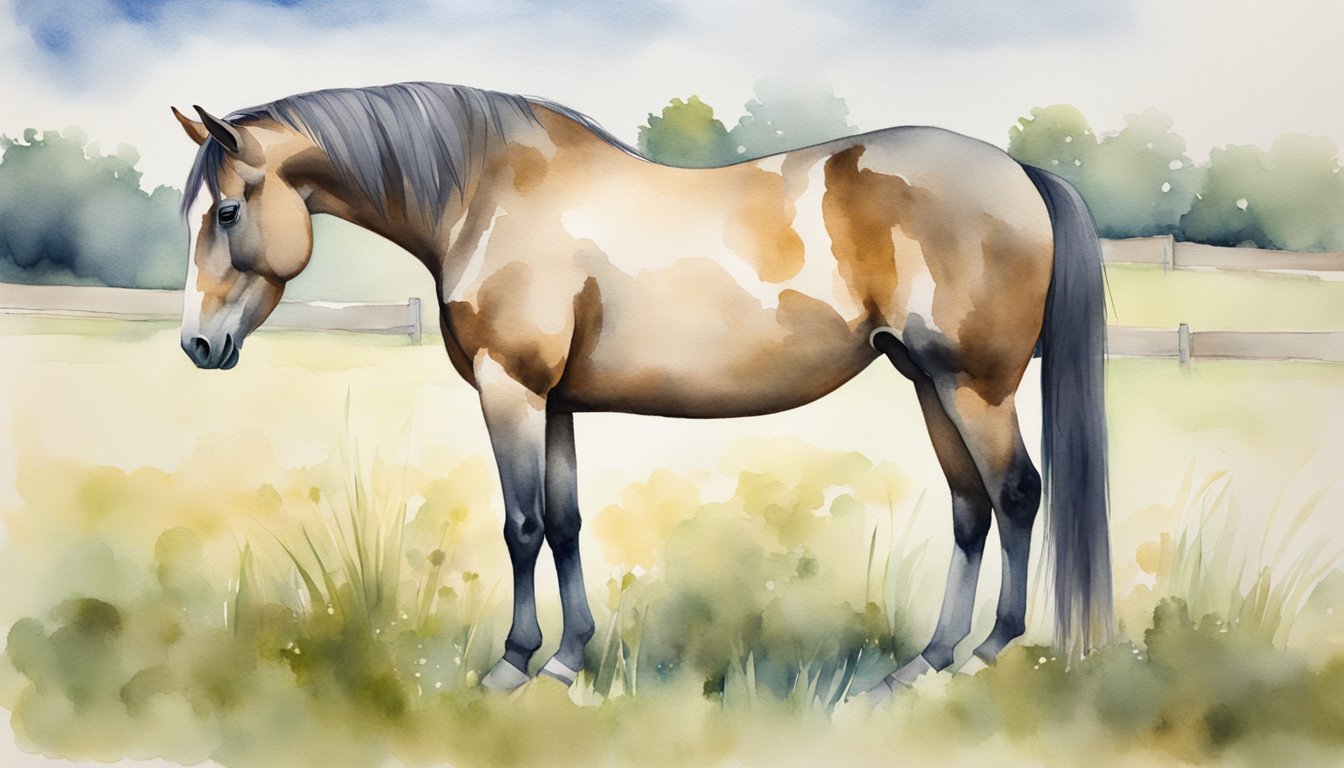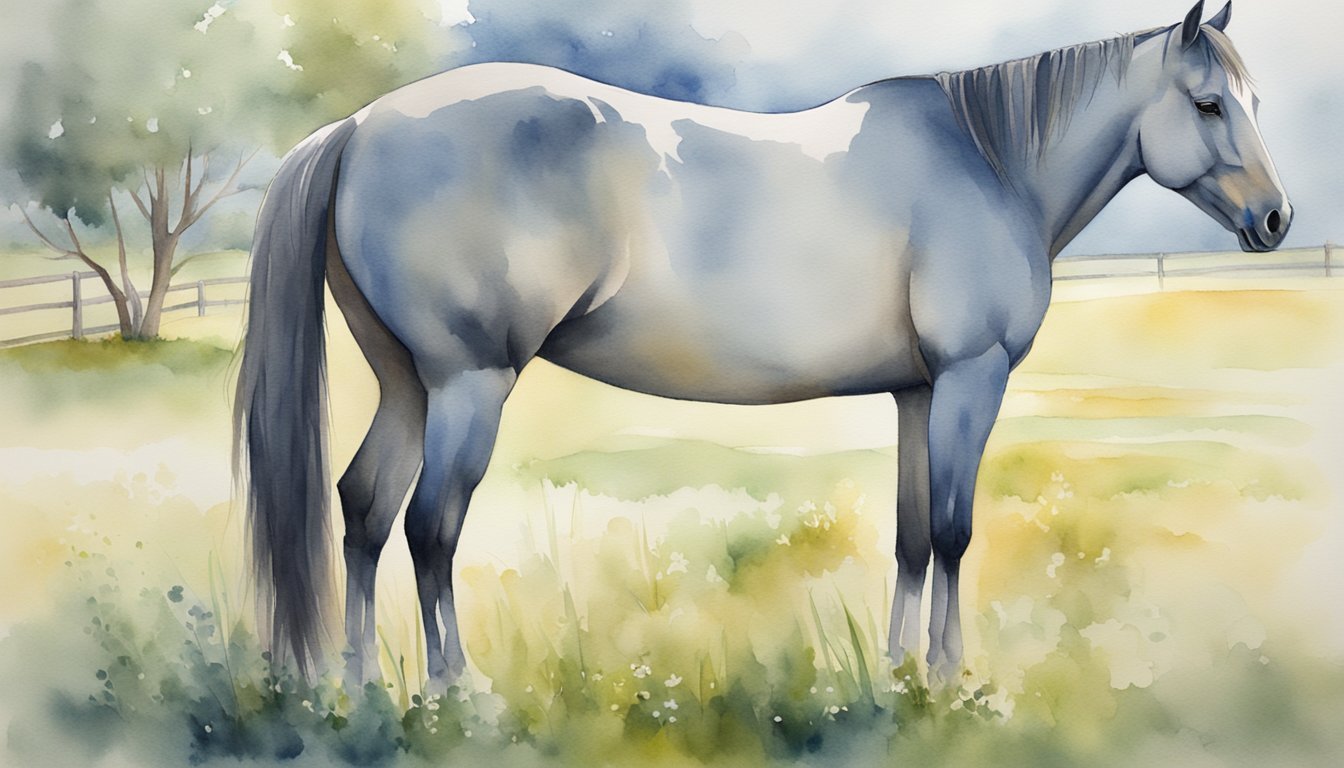Horse Sleep Patterns
Horses have unique sleeping patterns that reflect their nature as prey animals. They require both REM and non-REM sleep but can doze while standing up, ensuring quick action if a predator appears.
Understanding Equine Sleep
Horses engage in what is known as polyphasic sleep, meaning they have multiple bouts of sleep over a 24-hour period, unlike humans who are monophasic sleepers with one major sleep period. They have the ability to lock their leg muscles so they can rest while still standing – a trait that enhances their survival as prey animals.
REM and Non-REM Sleep Cycles
While horses can doze off standing, they need to lie down for REM (rapid eye movement) sleep, during which they experience muscle relaxation and dreams. This type of deep sleep is crucial for cognitive function and overall well-being. Non-REM sleep, also known as slow-wave sleep (SWS), is the restorative part of the sleep cycle that the horses can achieve standing up. It’s during the REM cycle where horses, especially the young or injured, are more vulnerable since they must be prone.
The Impact of Sleep Deprivation
Just like humans, horses can suffer from sleep deprivation, which can be dangerous leading to poor performance or even injury. Sleep disorders, such as narcolepsy and hypersomnia, although rare, can affect horses leading them to suddenly fall asleep, possibly causing them harm. Sleep deprivation in horses should be taken seriously and a veterinarian may need to assess their sleeping habits, especially if they show signs of distress or atypical behavior.
Maintaining a stable and safe environment is key to ensuring horses get the necessary REM sleep. Older horses or those with musculoskeletal issues may find lying down and getting up difficult, which is important to consider when managing their care to prevent disruptions in their sleep patterns.
Equine Sleep Physiology

Understanding how horses sleep—either standing up or lying down—gives insight into their unique adaptations. The physiology behind equine sleep involves an intricate balance of their muscular and skeletal systems, which allows horses to rest without collapsing.
Stay Apparatus Mechanism
The stay apparatus is a fascinating system that horses possess, which allows them to lock the joints in their limbs. This mechanism promotes rest with minimal muscular effort, enabling horses, especially adults, to doze while standing, keeping their vital organs unpressured. Intricate networks of tendons and ligaments in the hind legs facilitate this locking, ensuring that a horse can relax yet remain prepared for sudden flight, which is critical for their vigilance in the wild.
Muscular and Skeletal Support
While the stay apparatus handles the locking of joints, the horse’s muscles and skeleton have evolved to support their weight without undue pressure, allowing periods of standing rest. As horses age, they may experience muscle weakness, making the recumbent position more comfortable for deep sleep. When lying down, the muscles aren’t engaged to support the standing weight, offering a full relaxation mode for REM sleep, which cannot occur while they are standing due to the need for muscle activation to maintain balance.
For more detailed insights into equine sleep behaviors and their implications for welfare, readers can explore the research in “A review of equine sleep.” Further understanding of their sleep patterns in relation to husbandry factors is offered in the study on “The effect of altering routine husbandry factors on sleep duration and memory consolidation in the horse.”
Horse Sleep Behavior

Understanding horse sleep behavior sheds light on how these magnificent creatures have adapted to balance rest with the constant vigilance that their status as prey animals demands.
Sleeping Positions and Preferences
Horses have a unique ability to sleep both standing up and lying down. They enter light sleep phases, or doze, by locking their hind legs and resting their forelegs to nap without collapsing. The state of drowsiness allows them to snooze yet stay alert enough to run away from potential threats. However, for the deep sleep stages, which include rapid eye movement (dreaming), horses need to lie down. This behavior occurs in short intervals—a smart adaptation considering their vulnerability when not on their feet.
Unlike horses, other large herbivores like giraffes and elephants sleep mostly standing up due to their distinct anatomical structures. The requirement for horses to lie down to experience complete sleep cycles, including REM stages, sets them apart from these other large herbivores.
Group Dynamics and Safety
Horses typically do not sleep all at once; instead, they take turns resting, with one acting as a lookout to guard the group against predators. Known as polyphasic sleepers, they take multiple short naps throughout the day and night. The collective sleeping patterns ensure there’s always a member of the group in a state of wakefulness, ready to signal danger. This behavior showcases their adaptation for survival and the vigilance needed as a prey animal.
Foals, or young horses, require more sleep than adults and tend to take more frequent naps in short intervals, highlighting their need for more extended periods of rest for growth and development. The sleep needs and behavior of foals can be found in studies examining equine sleep patterns.
Due to their sleeping patterns, horses are at a higher risk for sleeping disorders if the environment does not provide a sense of security and comfort. Observations of group dynamics in local horse stables in Malaysia give insight into how horses’ sleep is influenced by their surroundings and herd structure.
In conclusion, horse sleep behavior encompasses a blend of lying down for deep sleep and standing dozes for safety, with group dynamics playing a pivotal role in protecting the herd from predators during vulnerable resting periods.

